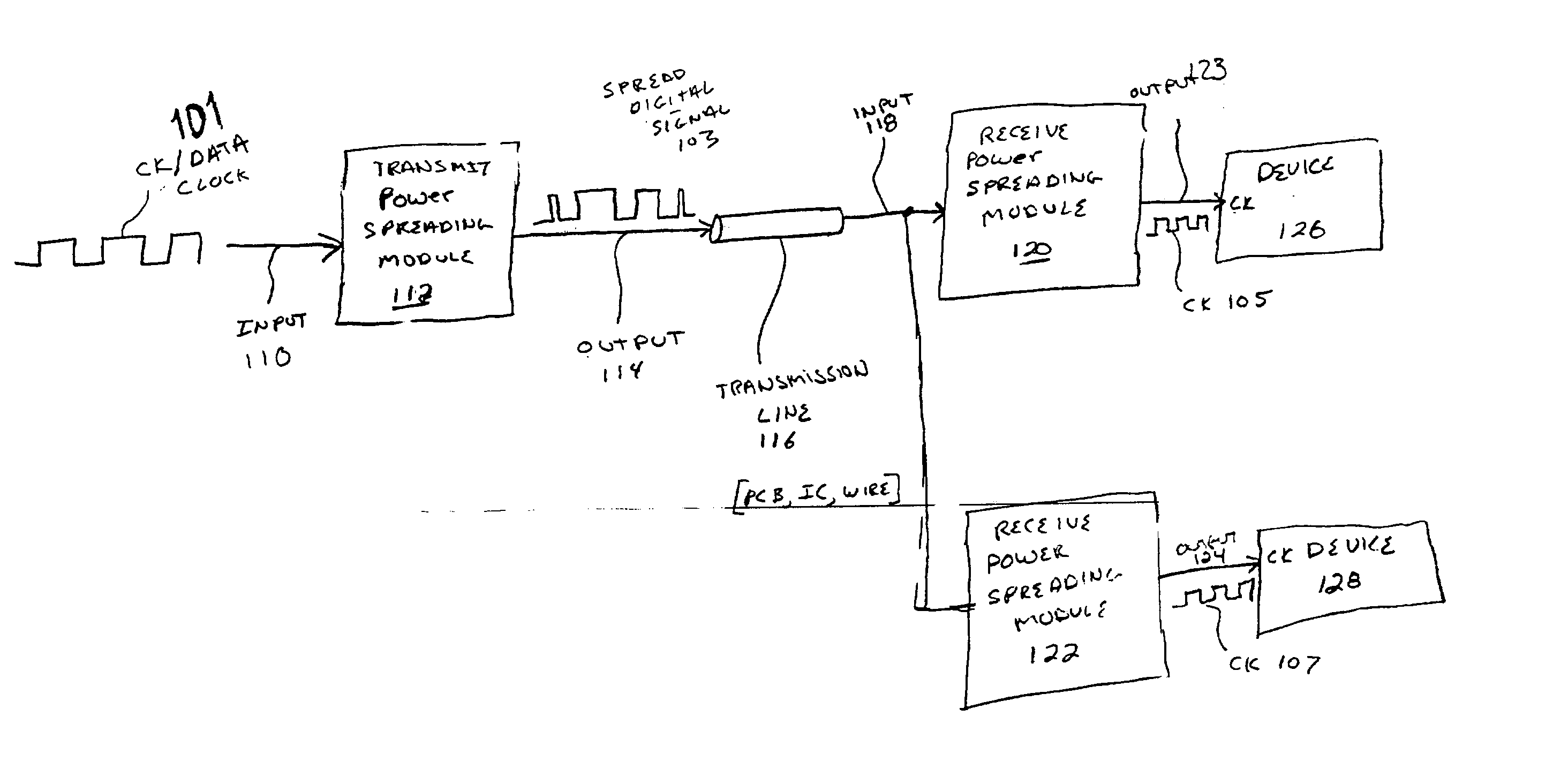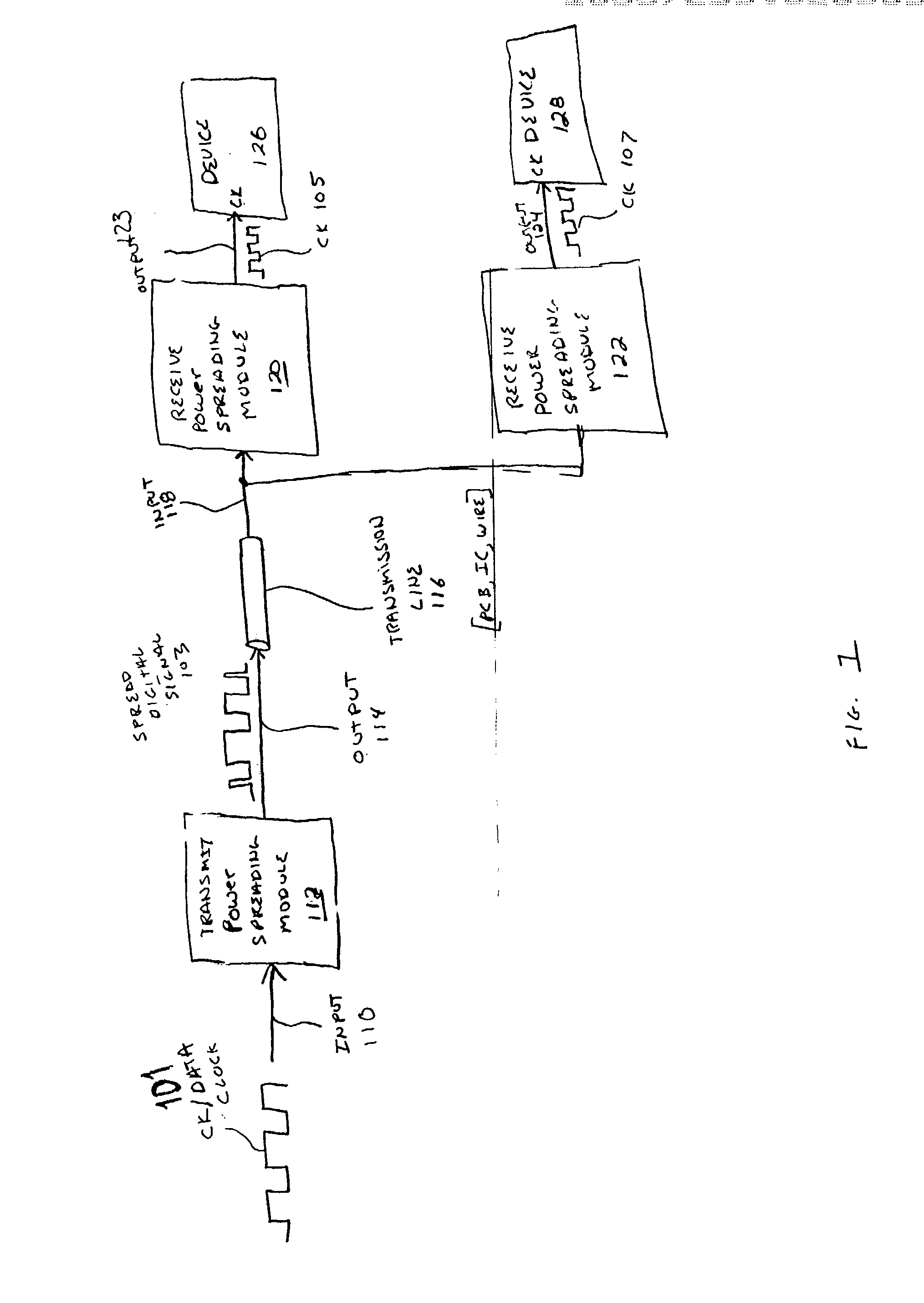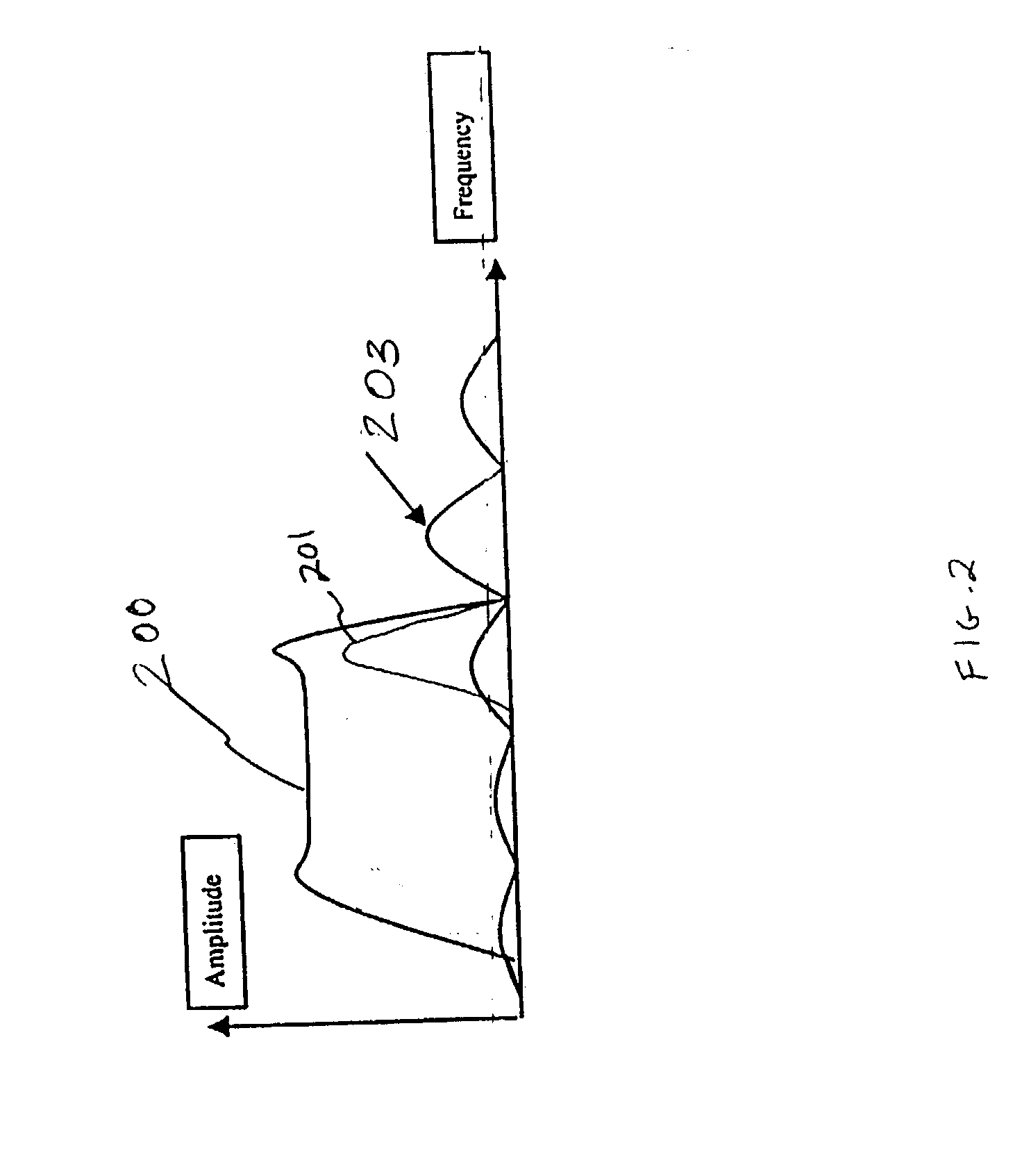Method and system of reducing electromagnetic interference emissions
a technology of electromagnetic interference and emission reduction, applied in multiplex communication, generating/distributing signals, instruments, etc., can solve problems such as affecting the quality of video, audio, and graphics, and devices supporting high-speed clocks and data paths are susceptible to internal and external radiation problems,
- Summary
- Abstract
- Description
- Claims
- Application Information
AI Technical Summary
Problems solved by technology
Method used
Image
Examples
Embodiment Construction
)
[0025] One embodiment of the present disclosure provides a method for a gated direct sequence spread spectrum (GDSSS) clock distribution in which an original clock signal is divided and spread over a wider frequency spectrum to reduce the radiated emissions. As used herein, a clock is defined as integrated circuit based timing devices such as are manufactured by companies like ICS or Pericom. In an embodiment, the clock signal is modified by small, random or pseudo-random phase shifts. Unlike with typical spread system solutions, these frequency hops, which spread the energy spectra (EMI), can occur at the frequency of the clock.
[0026] The present disclosure is best understood with a reference to the specific embodiments illustrated herein. Specifically, FIG. 1 illustrates a block diagram presenting an embodiment of a clock distribution network system in accordance with the present invention.
[0027] In operation, a signal labeled clk / data 101 is received at an input 110. For purpose...
PUM
 Login to View More
Login to View More Abstract
Description
Claims
Application Information
 Login to View More
Login to View More - R&D
- Intellectual Property
- Life Sciences
- Materials
- Tech Scout
- Unparalleled Data Quality
- Higher Quality Content
- 60% Fewer Hallucinations
Browse by: Latest US Patents, China's latest patents, Technical Efficacy Thesaurus, Application Domain, Technology Topic, Popular Technical Reports.
© 2025 PatSnap. All rights reserved.Legal|Privacy policy|Modern Slavery Act Transparency Statement|Sitemap|About US| Contact US: help@patsnap.com



